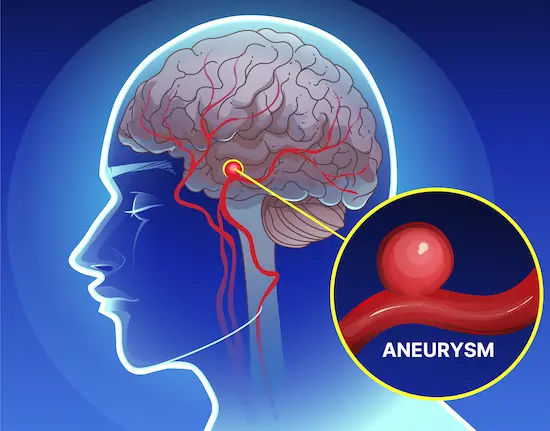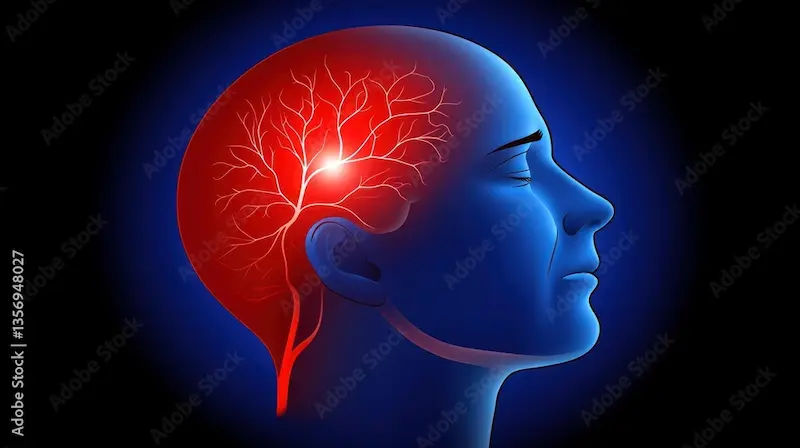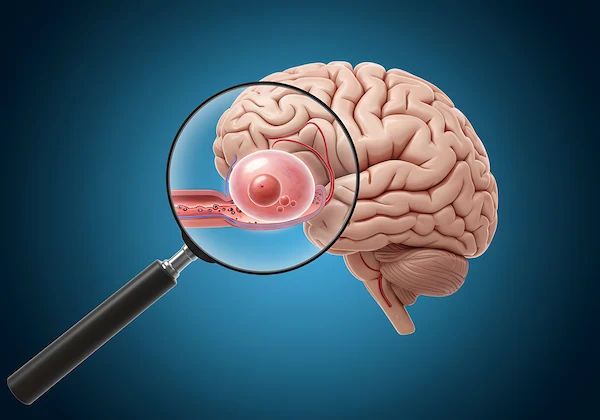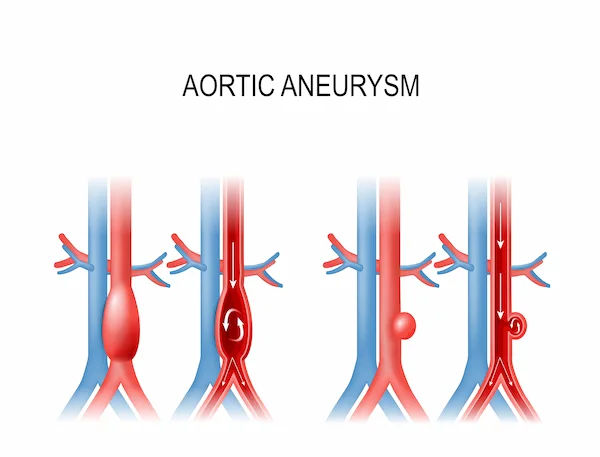Aneurysm Causes, Types, and Warning Signs: A Complete Guide
Learn about the causes, types, symptoms, and treatment options for aneurysms. Recognise the warning signs early and take preventive steps to protect your health.

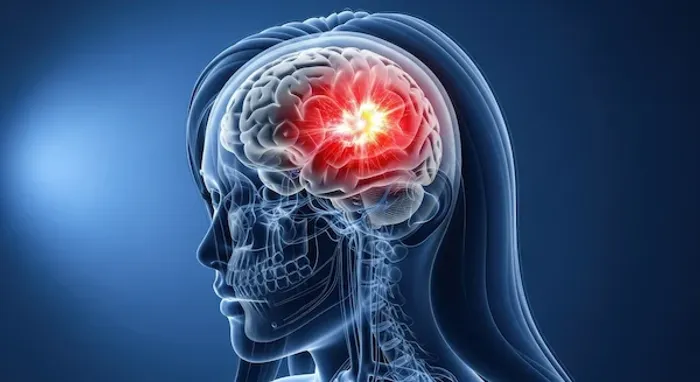
Introduction
An aneurysm is a silent, often hidden condition that many people are unaware of until it causes a serious problem. Imagine a weak spot on a tyre that slowly bulges out over time. That’s essentially what an aneurysm is—an abnormal bulge or ballooning in the wall of a blood vessel. While they can develop anywhere, the most critical are in the brain and the aorta, the body's main artery. The greatest danger lies in their potential to rupture, causing life-threatening internal bleeding. This guide will demystify what leads to aneurysms, explore the different types, and equip you with the knowledge to recognise the warning signs. Understanding these factors is the first step towards prevention and seeking timely medical help, potentially saving a life.
What Exactly is an Aneurysm?
At its core, an aneurysm is a structural failure of a blood vessel wall. Arteries are muscular tubes designed to handle high pressure from pumping blood. However, due to disease, injury, or a genetic predisposition, a small section of the wall can weaken. Under constant pressure from blood flow, this weak spot begins to stretch and bulge outward, much like a balloon. This bulge is the aneurysm. Most are small and grow slowly, causing no issues. However, as they enlarge, the wall becomes thinner and the risk of a tear or complete rupture increases dramatically. A rupture is a catastrophic medical event, leading to severe bleeding, organ damage, stroke, or even death within minutes. The causes of this weakening are varied and often interconnected.
What Causes an Aneurysm to Develop?
The formation of an aneurysm is rarely due to a single cause. It's usually a combination of factors that compromise the integrity of the arterial wall over time.
Underlying Health Conditions and Risk Factors
Certain medical conditions are primary drivers. Atherosclerosis, the hardening and narrowing of arteries due to plaque build-up, is a leading cause. This plaque can weaken the vessel wall. Chronic high blood pressure (hypertension) is another major culprit, as the constant, excessive force of blood pushing against the vessel walls can stress and weaken them. Other conditions like vasculitis (inflammation of blood vessels) can also damage and weaken arterial walls.
Genetic and Congenital Factors
Your family history plays a significant role. If a first-degree relative (parent, sibling, or child) has had an aneurysm, your risk is higher. Certain genetic disorders, such as Ehlers-Danlos syndrome, Marfan syndrome, and Loeys-Dietz syndrome, directly affect the body's connective tissues, including those that make up blood vessel walls, making them inherently weaker and more prone to aneurysms.
Lifestyle and Environmental Influences
Lifestyle choices significantly impact your risk. Smoking is one of the most potent risk factors for aortic aneurysms, as it damages and weakens the walls of arteries. Age is also a key factor; the risk increases significantly after the age of 65. Other factors include a poor diet high in fat and cholesterol, which contributes to atherosclerosis, and a lack of exercise.
The Silent Threat: Most Common Types of Aneurysms
Aneurysms are categorised by their location, which dictates their symptoms, risks, and treatment.
Aortic Aneurysms: The Body's Main Pipeline at Risk
The aorta is the large artery that carries blood from your heart to the rest of your body. An aneurysm here is particularly dangerous.
Abdominal Aortic Aneurysm (AAA): This occurs in the part of the aorta that runs through the abdomen. It's the most common type of aortic aneurysm and is strongly linked to atherosclerosis and smoking.
Thoracic Aortic Aneurysm (TAA): This occurs in the part of the aorta that runs through the chest. It is more commonly associated with genetic conditions like Marfan syndrome.
Cerebral (Brain) Aneurysms: A Threat in the Head
Also known as intracranial or berry aneurysms (due to their shape), these occur in the blood vessels within the brain. A rupture leads to a haemorrhagic stroke, known as a subarachnoid haemorrhage. The warning signs of a brain aneurysm that is leaking or has ruptured are distinct and severe.
Peripheral Aneurysms: Less Common but Notable
These can occur in other arteries, such as behind the knee (popliteal artery), in the groin (femoral artery), or in the spleen. While less likely to rupture than aortic or cerebral aneurysms, they can cause blood clots.
Recognising the Signs; Symptoms of an Unruptured vs. Ruptured Aneurysm
Understanding this difference is critical.
When There Are No Symptoms: The Silent Growth
Most aneurysms, especially small ones, are asymptomatic. They are often discovered incidentally during tests for other conditions. A large unruptured brain aneurysm might press on nerves or brain tissue, causing symptoms like a localised headache, eye pain, vision changes, or numbness on one side of the face. A large AAA might cause a deep, constant pain in the abdomen or back, or a throbbing sensation near the navel.
The Telltale Signs of a Rupture: A Medical Emergency
A rupture is a catastrophe. The symptoms are sudden and extreme:
For a ruptured brain aneurysm: This causes a "thunderclap" headache—an excruciatingly severe headache that comes on instantly, often described as the "worst headache of my life." This is accompanied by nausea, vomiting, stiff neck, blurred or double vision, sensitivity to light, seizure, loss of consciousness, and confusion.
For a ruptured AAA: This causes sudden, intense, and persistent abdominal or back pain, dizziness, rapid heart rate, clammy skin, shock, and loss of consciousness.
If you or someone else experiences any of these sudden, severe symptoms, call for emergency medical help immediately.
Consult a Specialist for Personalised Advice
How Are Aneurysms Diagnosed?
Since they are often silent, diagnosis usually relies on imaging tests, especially if you have risk factors. Common methods include:
Ultrasound: Often used as a first-line screening tool for AAAs.
CT (Computed Tomography) Scan: Provides detailed images and can detect aneurysms in the brain and aorta. A special dye (contrast) may be used.
MRI (Magnetic Resonance Imaging): Uses magnetic fields to create detailed images, excellent for detecting brain aneurysms.
Angiography: A more invasive test where a catheter is used to inject dye into the arteries, providing a detailed map of blood vessels.
If you have a family history or other risk factors, discussing screening options with a doctor is crucial. Apollo24|7 offers convenient home collection for tests like lipid profiles and blood pressure monitoring that can help assess underlying risk factors like cholesterol and hypertension.
Treatment Options
Treatment depends on the aneurysm's size, location, and growth rate.
Monitoring: Small, asymptomatic aneurysms may simply be monitored regularly with imaging to check for growth. Lifestyle changes like quitting smoking and controlling blood pressure are imperative.
Surgery: For larger or growing aneurysms, preventive surgery may be recommended.
Open Surgery: The damaged section of the artery is removed and replaced with a synthetic graft.
Endovascular Repair: A less invasive procedure where a stent-graft is threaded through an artery to the aneurysm site to reinforce the vessel wall from the inside. This is common for AAAs.
Can You Prevent an Aneurysm?
You can't change your genetics, but you can drastically reduce modifiable risks:
Don't smoke or use tobacco.
Control your blood pressure through diet, exercise, and medication if prescribed.
Manage cholesterol levels with a heart-healthy diet low in saturated and trans fats.
Exercise regularly.
Get screened if you have a family history or are a male over 65 with a history of smoking.
Conclusion
Understanding what leads to aneurysms and their various types empowers you to take charge of your vascular health. While the thought of an aneurysm can be frightening, knowledge is your best defence. By focusing on controllable risk factors—especially quitting smoking and managing blood pressure—you can significantly lower your risk. Be aware of your family history and discuss it with your doctor. Most importantly, recognise that sudden, severe symptoms like the worst headache of your life or acute abdominal pain are not to be ignored. If you have risk factors or experience any warning signs, consult a doctor online with Apollo24|7 for further evaluation and guidance on the next steps. Timely action can make all the difference.
Consult a Specialist for Personalised Advice
Consult a Specialist for Personalised Advice

Dr. Tapabrata Ray
General Physician/ Internal Medicine Specialist
4 Years • MBBS,DGM,CPMeC,ACMDC
Kolkata
MCR SUPER SPECIALITY POLY CLINIC & PATHOLOGY, Kolkata

Dr. Vandana Malik
General Practitioner
8 Years • MBBS, FAM
Noida
Skinlogics Clinic, Noida

Dr. Utsa Basu
Diabetologist
14 Years • MBBS, MD
Kolkata
Dr Utsa Basu Clinic, Kolkata
(400+ Patients)

Dr. Debdatta Pati
Psychiatrist
18 Years • MBBS, DPM, MD (PSYCHIATRY)
Kolkata
MCR SUPER SPECIALITY POLY CLINIC & PATHOLOGY, Kolkata

Dr. Dixant Chhikara
General Practitioner
4 Years • MBBS
Delhi
SKYNN CARE, Delhi
More articles from Aneurysm
Frequently Asked Questions
Can stress cause an aneurysm to rupture?
While chronic stress can contribute to high blood pressure—a key risk factor for developing an aneurysm—there is limited direct evidence that a single stressful event can cause a rupture. However, a sudden spike in blood pressure could theoretically contribute to stress on a weakened vessel wall.
What are the first signs of an aortic aneurysm?
Most abdominal aortic aneurysms (AAAs) have no early signs. As they grow, they might cause deep, constant pain in the abdomen or back, or a throbbing feeling near the navel. The first sign is often a rupture, which is a medical emergency.
Are there any warning signs days before a brain aneurysm ruptures?
Sometimes, a brain aneurysm may leak a small amount of blood before a major rupture. This can cause a 'sentinel headache,' which is a sudden, severe headache that acts as a warning sign days or weeks before a full rupture. This requires immediate medical attention.
Can you live a long life with an unruptured brain aneurysm?
Yes, many people live long, full lives with a small, stable, unruptured brain aneurysm that is monitored by a doctor. Treatment is only recommended if the risk of rupture is deemed higher than the risk of treatment.
How is an abdominal aortic aneurysm screening done?
Screening for an AAA is typically done with a simple, painless ultrasound scan of the abdomen. It is quick, non-invasive, and highly effective at detecting an aneurysm.
